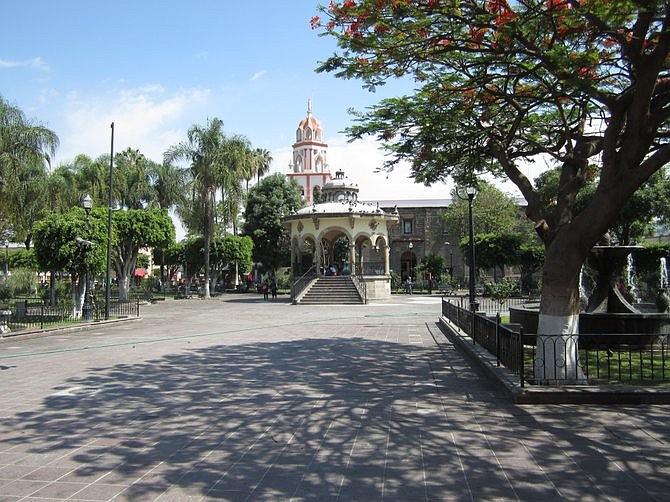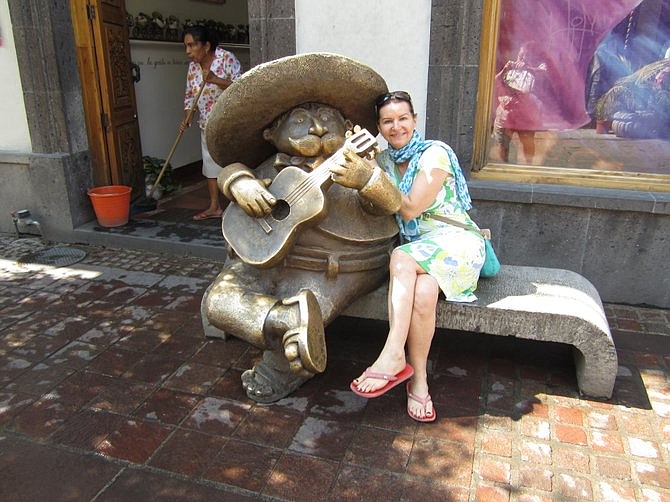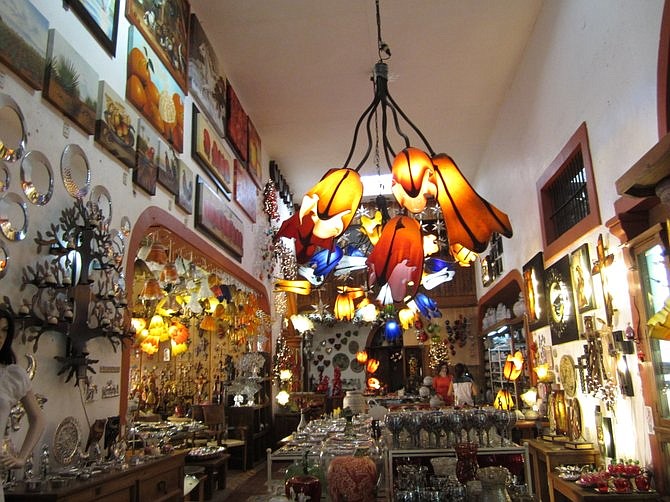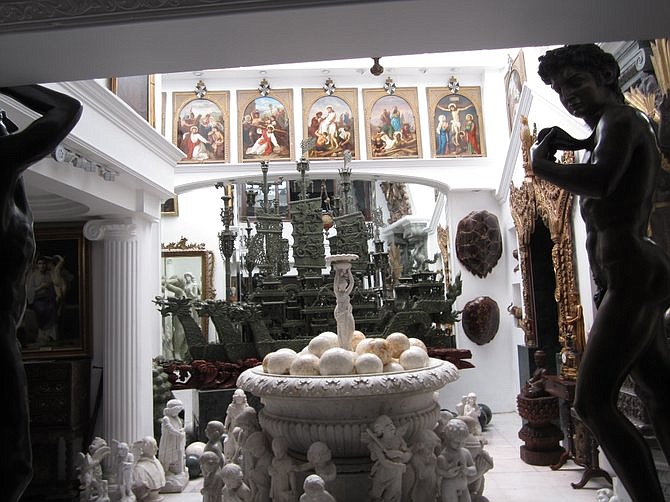 Facebook
Facebook
 X
X
 Instagram
Instagram
 TikTok
TikTok
 Youtube
Youtube

Guadalajara is Mexico's second-largest city and capital of the state of Jalisco. It is a cultural center of Mexico, considered by most to be the home of mariachi music.
A center of learning, the city has 22 museums, six universities, two culinary institutes and a thriving art scene. It’s been the dwelling of distinguished poets, writers, painters, actors, film directors and representatives of the arts.

The Guadalajara metropolitan area has a population of 4.3 million, and includes seven adjacent municipalities. Our adventure focused on two of these municipalities: Tonalá and Tlaquepaque. We also researched another great pride of Jalisco – tequila.
Central Tlaquepaque is an artist colony along the pedestrian-only street Independencia. It includes studios of remarkable artists and galleries and shops providing talavera and other quality Mexican art. We looked for lodging within walking distance and found many options, choosing Casa Armonia, an eight-suite hotel with patio, pool, Jacuzzi and full breakfast included.
We were so lucky to connect with Victor, manager at the hotel. He arranged transport from the airport, and treated us to samples of his products: a beer made from agave, and his Destileria Las Juntas Tequila Reposado, produced in Amatitan. His tequila is sooo smooth and delicious!

For dinner, we went to El Abajeño, taking up half a block between Reforma and Juarez. With trees, fountains, large skylights, and bamboo and bushes around the edges, it’s almost a city park. We sat close to some mariachis serenading a table of 20. I picked a tequila from a page-long listing, and the waiter (attentive but almost invisible) served it along with a shot of lime juice (so much better than squeezing limes into my mouth) and a sangrita (tomato juice, orange juice, lemon, spice).
Guadalajara features chicharrón tacos, what Americans know as pork rinds or cracklings. But the taco version is not crispy and dry; it is soft and easily chewable, with lots of flavor.

Tonalá, which is an 80-peso ($6.40 US) taxi ride away, offers crafts, pottery, household accessories and cheap purchases. Many business reps and importers come here to buy wholesale.
On Thursdays, the market balloons to a mile-long collection of street booths. Traffic (both driving and walking) is slow, but the experience is worth the delay. Halina found some shoes she loved for less than $10, and we found Cofradia Tequila Reposado in a tasting room, which was very yummy. (But not as good as Victor’s.)
Two blocks from our lodging was Parian, also known as Plaza de los Mariachis. It occupies a full block and has a large performance stage. There are 22 restaurants, defined not by walls, but by color/pattern changes in their tablecloths. At 3:30 and 9 p.m. there’s a showcase of mariachis and dancers on the stage. The pozole is delicious!

Artist studios, galleries and shops in Tlaquepaque are fascinatingly designed, exhibiting a variety of artistic expressions. Our favorite: Sergio Bustamante, whose gallery includes indoor and outdoor spaces and a variety of media.
Independencia also includes many attractive restaurants, many of which have interior patios to offer indoor or outdoor settings, and, of course, artwork everywhere. The art exposure was refreshing, even spirit-soaring.

Then we went to my cousin’s house, in central Guadalajara. Rodrigo, a land use/development attorney for 40 years, had made a ton of money, which he reinvested in property, making another ton of money, which enabled him to follow his passion of art collecting. His seriously fortified four-story house/office seems to have well over 100 rooms, and every wall, nook and cranny is occupied by art. I saw Picasso, Dali, Renoir, Kahlo, Ribera, large sculptures by the Italian masters, an extensive collection of intricate ivory carvings, even a six-foot intricately carved jade ship.
I've visited art galleries in San Diego, L.A., San Francisco, New York, Paris and Poland. Rodrigo’s collection was the most intense I have seen. Rodrigo, a close friend of Bustamante, presented us with a small sculpture by him that we brought home.


Guadalajara is Mexico's second-largest city and capital of the state of Jalisco. It is a cultural center of Mexico, considered by most to be the home of mariachi music.
A center of learning, the city has 22 museums, six universities, two culinary institutes and a thriving art scene. It’s been the dwelling of distinguished poets, writers, painters, actors, film directors and representatives of the arts.

The Guadalajara metropolitan area has a population of 4.3 million, and includes seven adjacent municipalities. Our adventure focused on two of these municipalities: Tonalá and Tlaquepaque. We also researched another great pride of Jalisco – tequila.
Central Tlaquepaque is an artist colony along the pedestrian-only street Independencia. It includes studios of remarkable artists and galleries and shops providing talavera and other quality Mexican art. We looked for lodging within walking distance and found many options, choosing Casa Armonia, an eight-suite hotel with patio, pool, Jacuzzi and full breakfast included.
We were so lucky to connect with Victor, manager at the hotel. He arranged transport from the airport, and treated us to samples of his products: a beer made from agave, and his Destileria Las Juntas Tequila Reposado, produced in Amatitan. His tequila is sooo smooth and delicious!

For dinner, we went to El Abajeño, taking up half a block between Reforma and Juarez. With trees, fountains, large skylights, and bamboo and bushes around the edges, it’s almost a city park. We sat close to some mariachis serenading a table of 20. I picked a tequila from a page-long listing, and the waiter (attentive but almost invisible) served it along with a shot of lime juice (so much better than squeezing limes into my mouth) and a sangrita (tomato juice, orange juice, lemon, spice).
Guadalajara features chicharrón tacos, what Americans know as pork rinds or cracklings. But the taco version is not crispy and dry; it is soft and easily chewable, with lots of flavor.

Tonalá, which is an 80-peso ($6.40 US) taxi ride away, offers crafts, pottery, household accessories and cheap purchases. Many business reps and importers come here to buy wholesale.
On Thursdays, the market balloons to a mile-long collection of street booths. Traffic (both driving and walking) is slow, but the experience is worth the delay. Halina found some shoes she loved for less than $10, and we found Cofradia Tequila Reposado in a tasting room, which was very yummy. (But not as good as Victor’s.)
Two blocks from our lodging was Parian, also known as Plaza de los Mariachis. It occupies a full block and has a large performance stage. There are 22 restaurants, defined not by walls, but by color/pattern changes in their tablecloths. At 3:30 and 9 p.m. there’s a showcase of mariachis and dancers on the stage. The pozole is delicious!

Artist studios, galleries and shops in Tlaquepaque are fascinatingly designed, exhibiting a variety of artistic expressions. Our favorite: Sergio Bustamante, whose gallery includes indoor and outdoor spaces and a variety of media.
Independencia also includes many attractive restaurants, many of which have interior patios to offer indoor or outdoor settings, and, of course, artwork everywhere. The art exposure was refreshing, even spirit-soaring.

Then we went to my cousin’s house, in central Guadalajara. Rodrigo, a land use/development attorney for 40 years, had made a ton of money, which he reinvested in property, making another ton of money, which enabled him to follow his passion of art collecting. His seriously fortified four-story house/office seems to have well over 100 rooms, and every wall, nook and cranny is occupied by art. I saw Picasso, Dali, Renoir, Kahlo, Ribera, large sculptures by the Italian masters, an extensive collection of intricate ivory carvings, even a six-foot intricately carved jade ship.
I've visited art galleries in San Diego, L.A., San Francisco, New York, Paris and Poland. Rodrigo’s collection was the most intense I have seen. Rodrigo, a close friend of Bustamante, presented us with a small sculpture by him that we brought home.
Comments